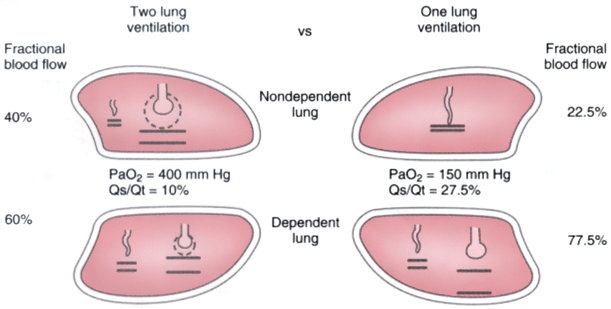 |
 |
Figure 49-27
Schematic representation of two-lung ventilation versus
one-lung ventilation. Typical values for fractional blood flow to the nondependent
and dependent lungs are shown, as well as arterial oxygen tension (PaO2
)
and shunt (QS/QT)
for the two conditions. QS/QT
during two-lung ventilation is assumed to be distributed equally between the two
lungs (5% to each lung). The essential difference between two-lung and one-lung
ventilation is that during one-lung ventilation, the nonventilated lung has some
blood flow and therefore has an obligatory shunt, which is not present during two-lung
ventilation. The 35% of total flow perfusing the nondependent lung, which was not
shunt flow, was assumed to be able to reduce its blood flow by 50% by hypoxic pulmonary
vasoconstriction. The increase in QS/QT
from two-lung to one-lung ventilation is assumed to be solely due to the increase
in shunt through the nonventilated, nondependent lung during one-lung ventilation.
(From Benumof JL: Anesthesia for Thoracic Surgery. Philadelphia, WB Saunders,
1987.)

 |
